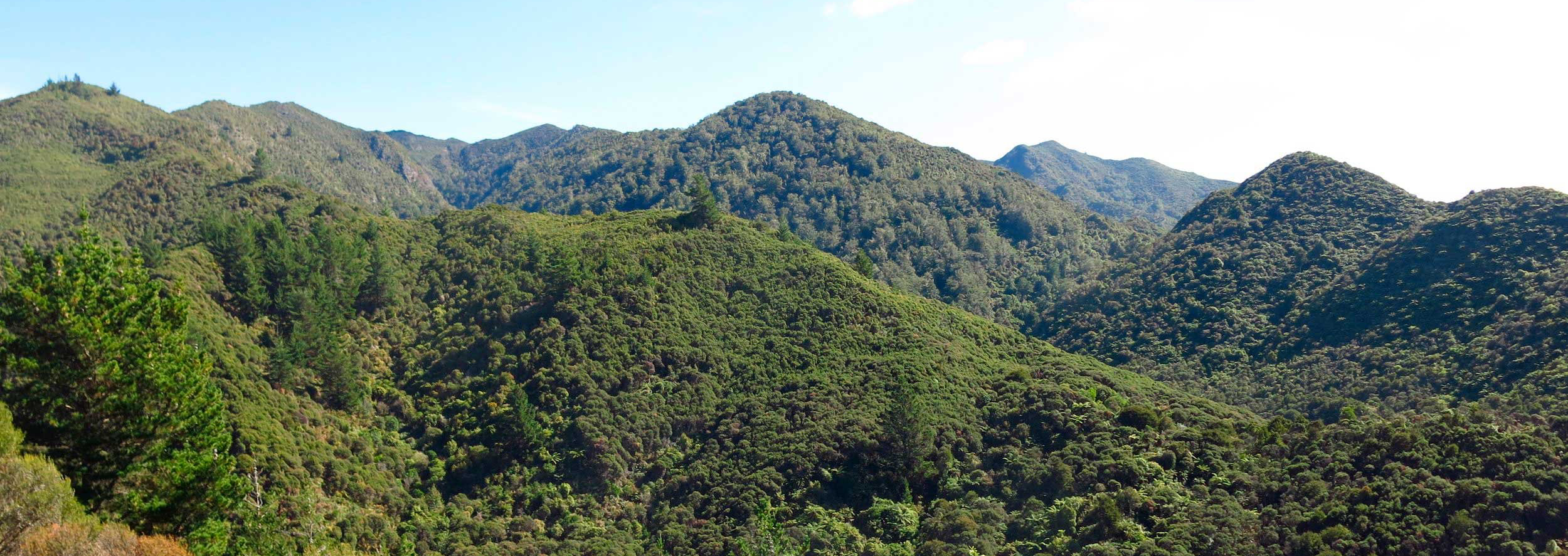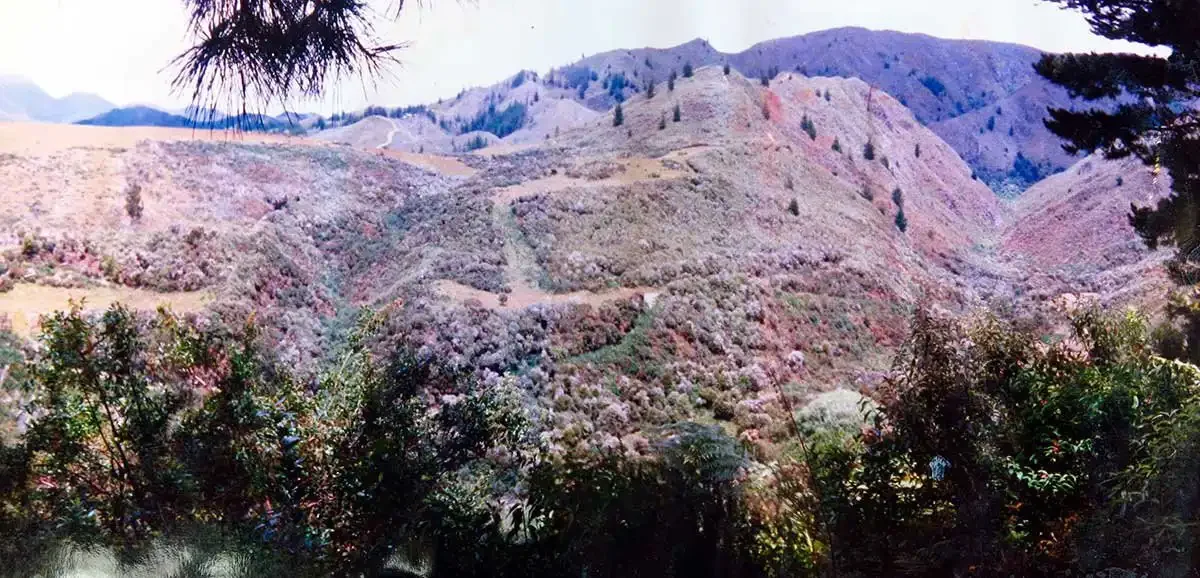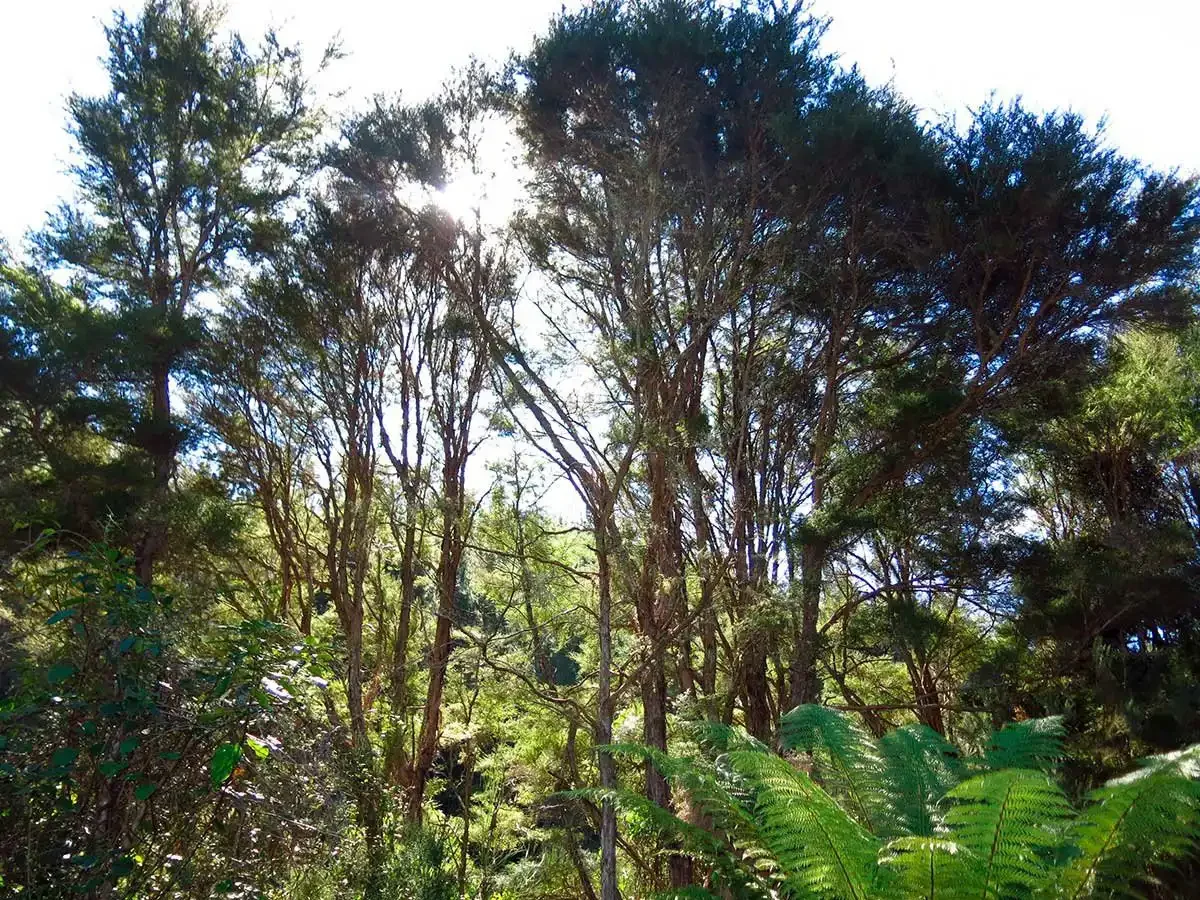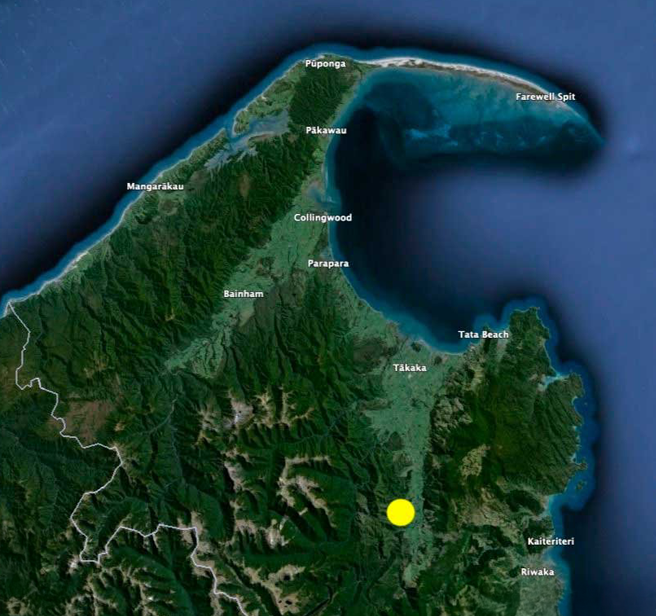
Kānuka Hill Native Regeneration Project
Te Ngāhere -The Forest
1993
Now
Kānuka Hill is 76.4 ha of naturally regenerating indigenous forest located in Uruwhenua, Mōhua (Golden Bay). Registered under the New Zealand Emissions Trading Scheme in 2012, the forest sequesters on average 896 tonnes of carbon dioxide annually. The land is also home to the Kill Devil track, a historic and technical track used by mountain bikers and back country trampers on the edge of the Kahurangi National Park.
In the 1990s the area was ex pasture overrun with gorse and a few regenerating natives. Now it is an established forest of Kānuka, Mānuka, Tōtora, Ferns and Rimu that have largely self seeded.
Te Tāngata -The People
The landowner Aline D’oust (pictured on right) gave up the right to farm the land, choosing instead to protect it as a permanent forest. 51 ha of the land is also protected under the QE II covenant. Aline has enhanced the forest removing gorse and planting additional Mānuka trees to foster honey production.
Aline’s vision for Kānuka Hill is to recreate an untouched landscape that fosters biodiversity as a permanent forest.
Wāhi - The Location
The Kānuka Hill project is located top of the South Island of New Zealand, Golden Bay.
Technical Stuff
The Kānuka Hill Native Regeneration Project is being undertaken under the Permanent Forest Category of the New Zealand Emissions Trading Scheme. The project issues New Zealand Units (NZUs) based on New Zealand Government rules for carbon sequestration rates by indigenous forest.
Once the NZUs are sold to a carbon offset buyer, they are cancelled in the New Zealand Emissions Trading Registry so they cannot be used by (or sold to) anyone else.
Kanuka Hill Forest Conservation Project
Project Name
96 ha
Project Area
Aline d’Aoust
Project Owner
Ekos
Project Developer
Uruwhenua, Golden Bay, Tasman District, New Zealand
Project Location
Continuation of pastorlaism (sheep/beef grazing)
Baseline Scenario
Permanent forest protection
Project Scenario
Afforestation/reforestation (A/R): Enhanced natural regeneration
Activity Type
Carbon sequestration; biodiversity conservation; water quality protection; climate resilience
Project Benefits
Not applicable
Trees Planted
9,533 tCO2e
Carbon Credits Issued
New Zealand Emissions Trading Scheme - Permanent Forest Category
Carbon Credit Standard
Ministry for Primary Industries
Verifier
Carbon Credit Registry
Credits available for Business Clients
Carbon Credit Status
Whāia Te Pūtea - Follow The Money
Conservation costs money. The main cost elements are:
Establishing a forest. This forest was established by nature because it naturally regenerated after the landowner stopped grazing this land.
Conservation management costs. This includes pest and weed control, forest monitoring, and the administration of the carbon project (carbon returns, registry account management and general administration).
Opportunity costs. This is the revenue that the landowner has given up to enable forest conservation to happen. In this project the landowner gave up revenue from pastoral farming - revenue that would normally be used to make a living off the land.
Carbon credit revenue goes to cover these costs.






